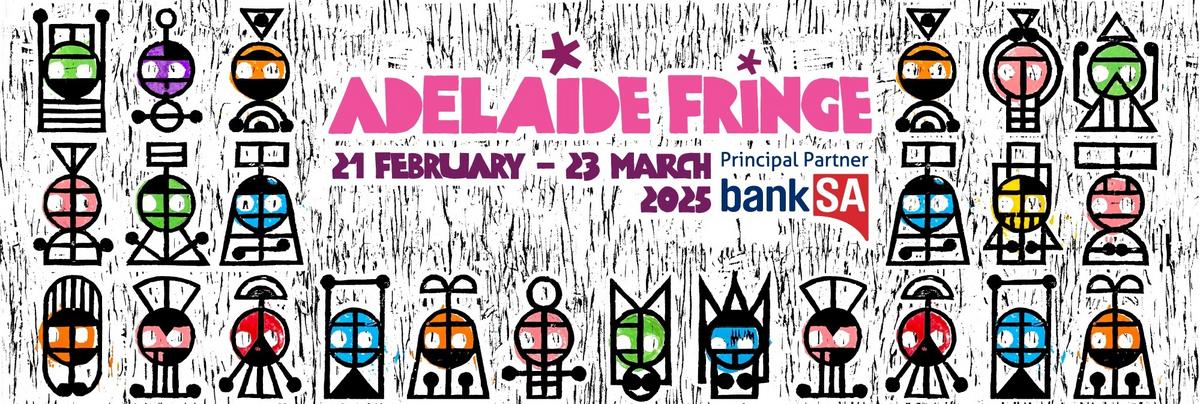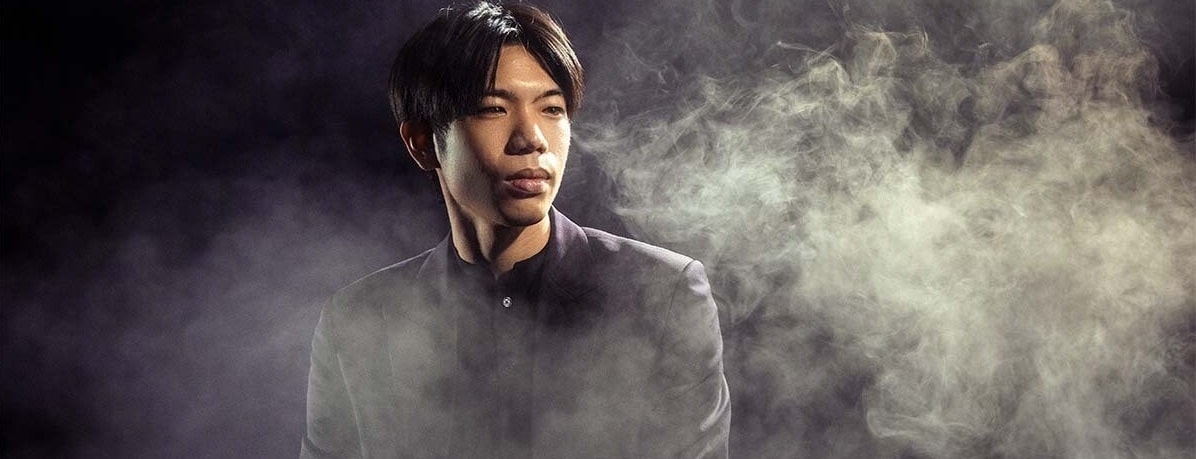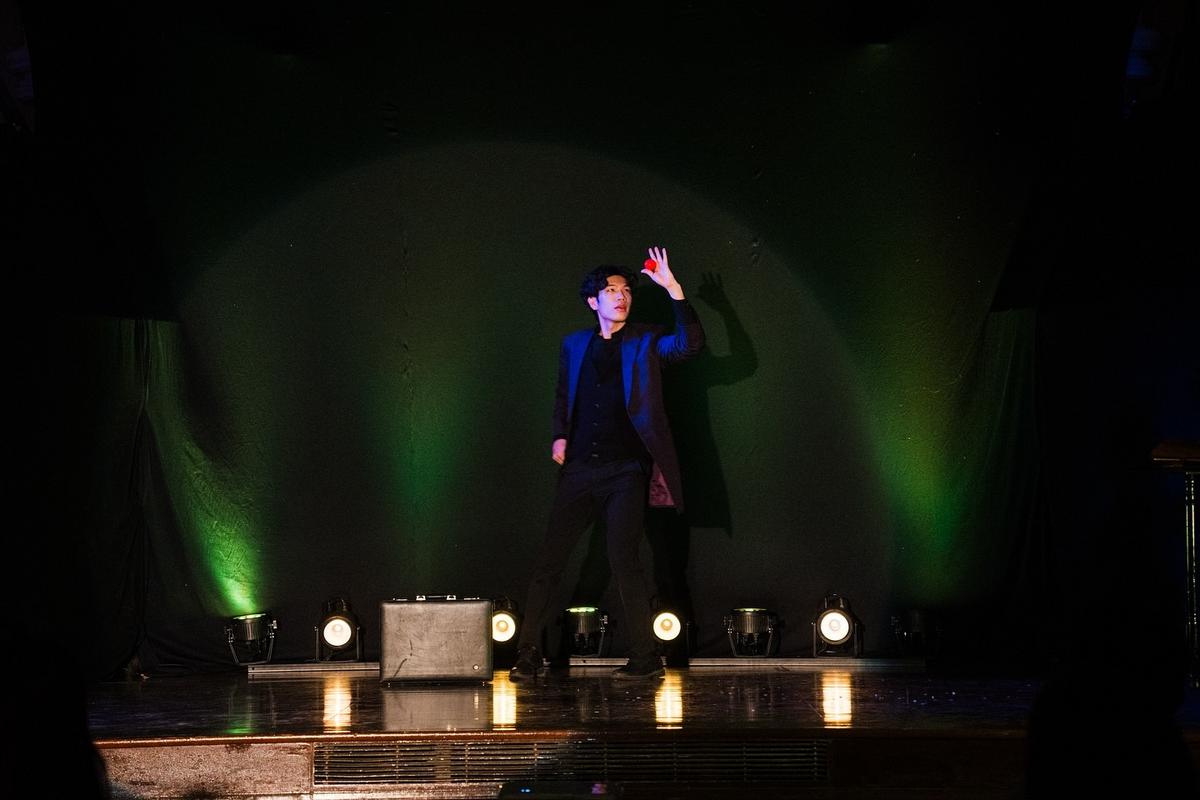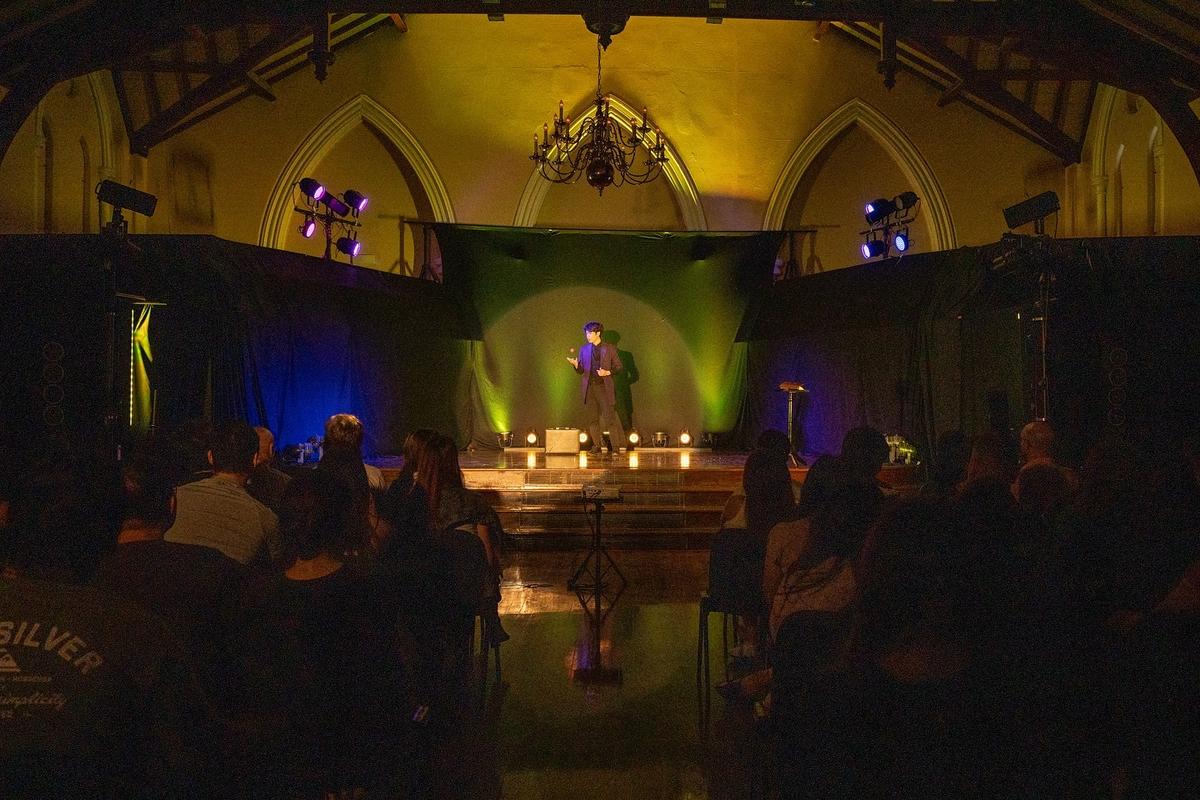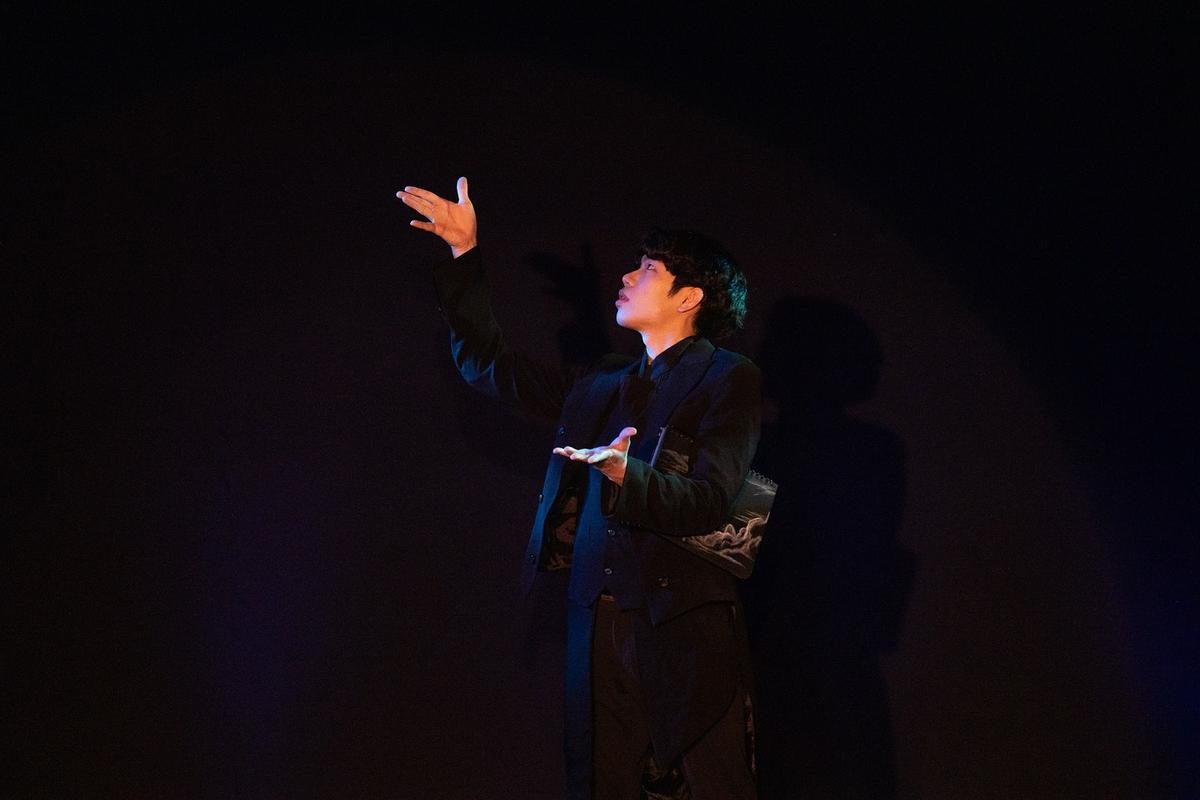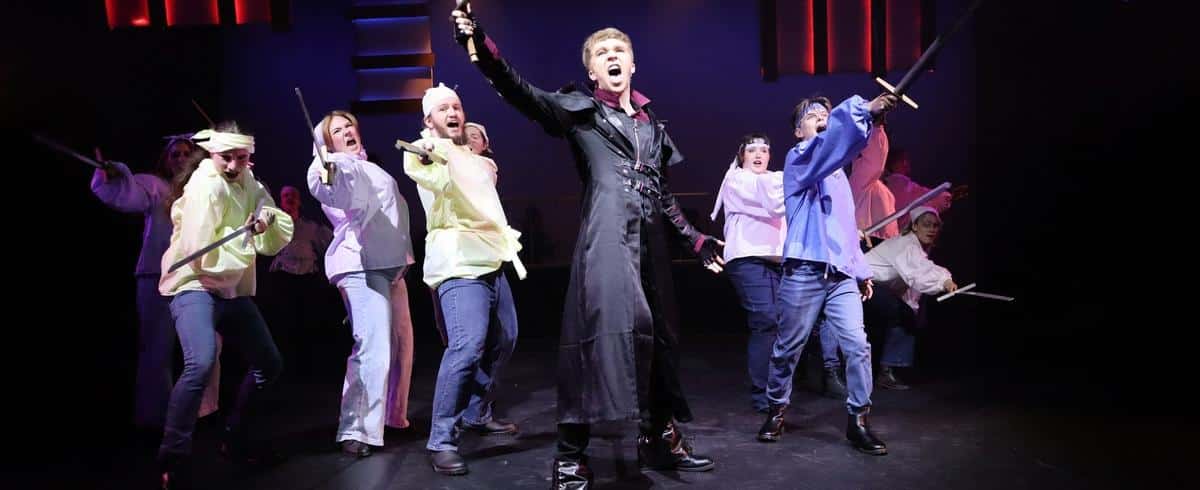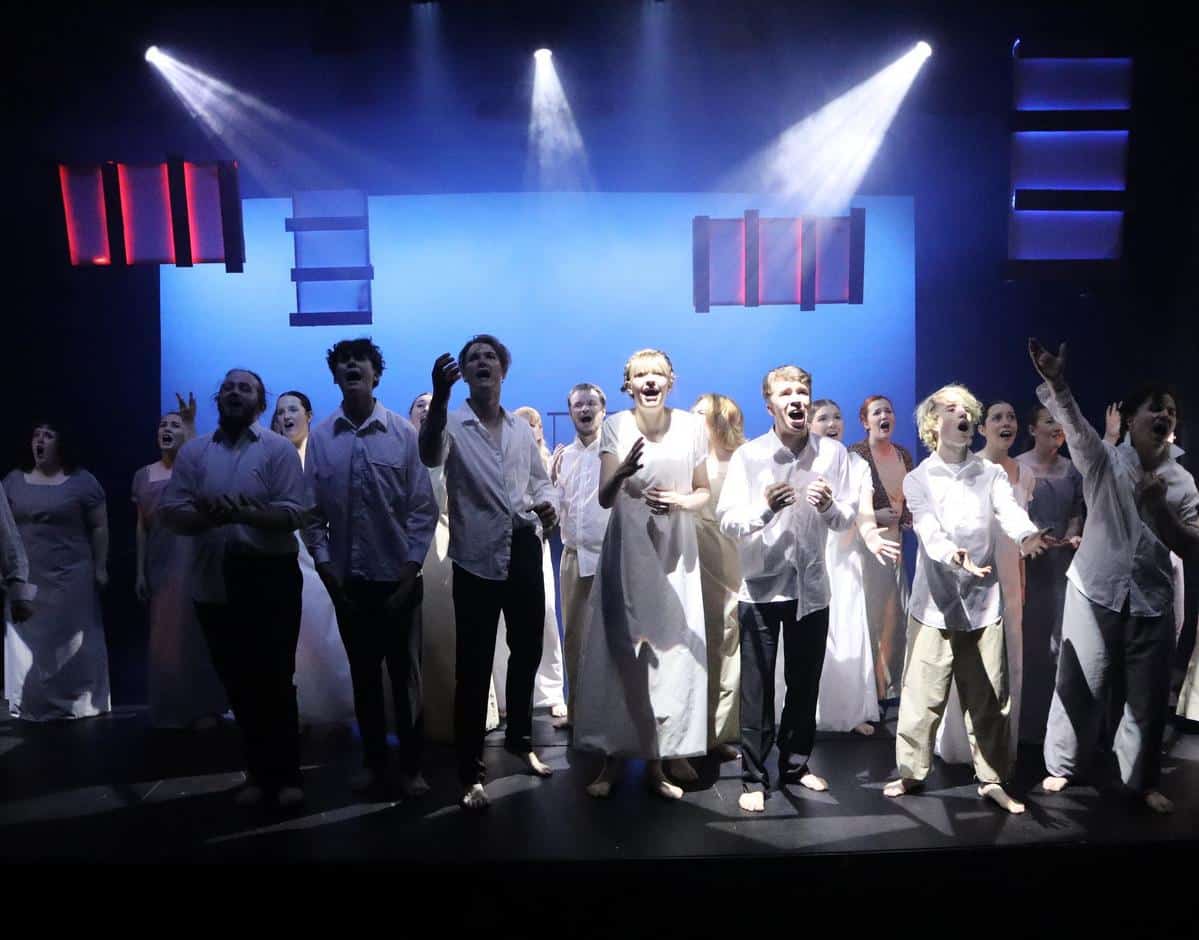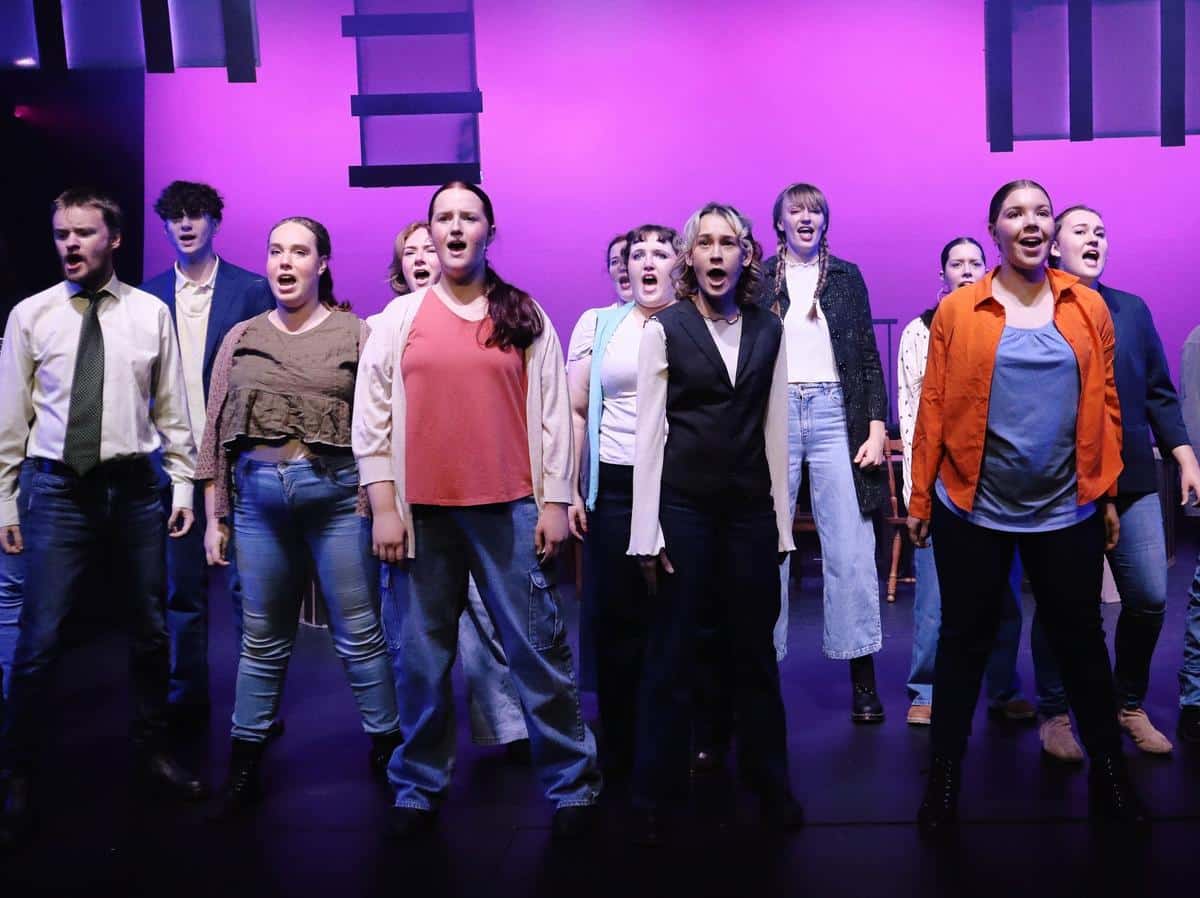‘Breaking: The Musical – a completely legal parody musical’, shares the colourful and comedic story of how ‘Spray-gun’ and her breakdancing reached the Paris Olympics and subsequently broke the internet. Such was the anticipation for this show; there were some audience members dressed in appropriate tracksuits or were watching videos of Olympic footage in the queue to prepare them. A small live band to the side, a white picket fence, and a projector on a completely blacked-out stage awaited the eager hordes. Filled with visual gags and presumably somewhat accurate research of ‘Spray-gun’s’ journey, comedian Stephanie Broadbridge has created something oddly endearing.
Songs were cleverly incorporated, with references to popular musicals such as Rent (‘525,600 dollars’), Wicked (flying on the Olympic torch), and a well-worded encore performance parodying ‘Rain on My Parade’, directly addressing their success in finding a legal loophole. Standout songs included ‘I Think I Pulled a Muscle’, involving ‘Spray-gun’s’ husband forfeiting a spot at competing, and ‘I’m Breaking Down’, a heartfelt ballad on her internet image which is then interspersed with half-hearted breakdancing. An unexpected delight was a song dedicated to her time on ‘I’m A Celebrity, Get Me Out of Here’, featuring the other contestants making fun of their own presence on the show, and Julia Morris with a suspiciously Robert Irwin-shaped hand-puppet encouraging ‘Spray-gun’ to embrace her newfound celebrity status.
Sprinkled throughout the performance were references to the legal battle that nearly prohibited them from sharing this World Premiere. Interjections from characters in barrister’s robes or the censoring and changing of words from the narrator were often incorporated into the humour of the show. Standout performances from the ensemble include Jake Howie, particularly with his role as ‘Spray-gun’s’ charmingly Sassy Inner Voice, and Freddie, as her exceptionally over-confident husband and partner in crime.
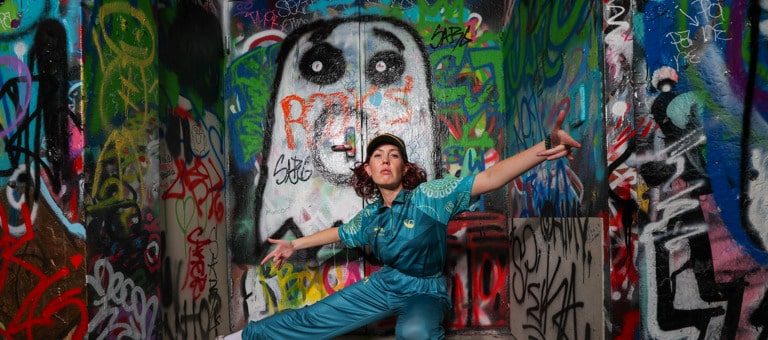
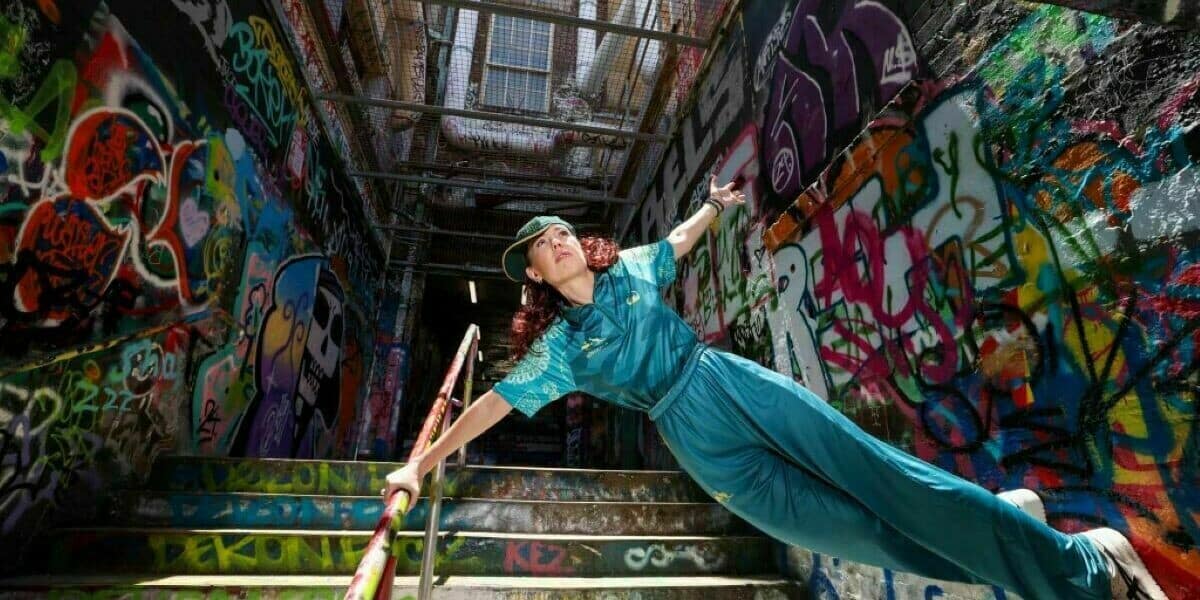
A purely mimed segment encompassing the journey from Australia to Paris was one of the strongest moments in the show. The exaggerated impatience of moving through airports and new places as a tourist was both highly relatable and amusing. Unfortunately, this actor cannot be named yet as there was neither a program detailing this, nor were their names visible during the bows with the projected writing blocked by the actors on stage.
With no allocated or raised seating, it often meant that those who were not in the front two rows were not able to see anything that happened when actors sat on the stage as views were blocked. While many of the lyrics and niche references may have been entertaining, it was difficult to hear what many of them were as the live band was much louder than most of the performers. In addition to a lack of sound-checking, there were moments in the beginning where the music was not in time with the singers. Thankfully, this dissipated as the show progressed and the performers grew in confidence.
There were even some elements of audience participation, one of which included the narrator encouraging everyone to join in a breakdown of the infamous break-dance. While there was a moment of confusion as to whether we should follow their verbal directions or just mirror them, the chaotic atmosphere certainly suited the performance overall. The chaotic energy certainly followed over into their costumes, from bejewelled Olympic tracksuits, internet trolls in hooded capes, to the narrator suddenly wearing fishnets and underwear instead of pants.
Despite the shoestring budget they were operating on and waiting almost 20 minutes for the show to start after the allocated show time, it was undeniably an entertaining night out.
